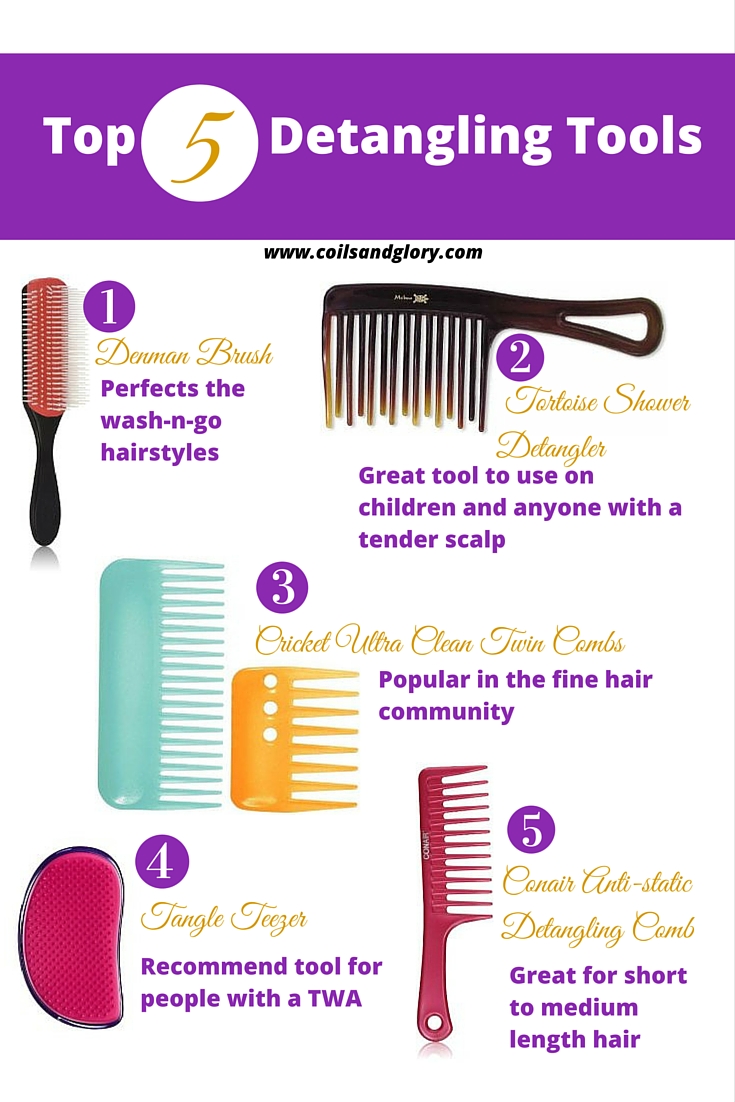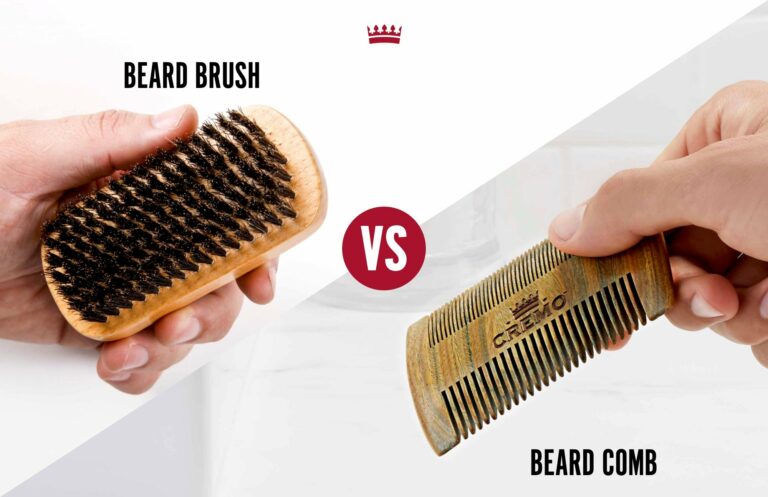Which Comb Is Best For Natural Hair?
Hey there, curious about which comb is best for natural hair? Well, you’ve come to the right place! We all know that taking care of our hair can sometimes be a bit of a puzzle, especially when it comes to finding the perfect comb. But fear not, because today we’re going to dive into the world of hair combs and discover which one is the ultimate champion for natural hair. So, sit back, relax, and get ready to unlock the secrets of happy and healthy natural hair!
Now, when it comes to natural hair, finding the right comb can make a world of difference. Whether you rock a beautiful afro, lush curls, or waves, choosing the right comb can help reduce breakage, prevent tangles, and keep your hair looking fabulous every day. But with so many options out there, how do you know which one is the best fit for your precious strands? That’s exactly what we’re going to explore together.
Ready to embark on this hair adventure? From wide-tooth combs to detangling brushes, we’ll break down the pros and cons of each option so you can make an informed decision. By the end of this guide, you’ll be equipped with all the knowledge you need to create a strong and loving relationship between your natural hair and its perfect comb. Let’s get started on this exciting journey!

The Ultimate Guide to Choosing the Best Comb for Natural Hair
When it comes to managing natural hair, finding the right comb can be a game-changer. Different hair types require different combing techniques and choosing the wrong comb can cause damage and breakage. In this comprehensive guide, we will explore the various types of combs available and help you navigate through the options to find the best comb for your natural hair.
The Wide-Tooth Comb: Embrace Your Curls with Care
For individuals with natural hair, a wide-tooth comb is a must-have tool. This comb is designed to detangle hair without causing damage or breakage. The wide gaps between the teeth allow for easy maneuvering through thick curls and reduce the risk of snagging or pulling. When using a wide-tooth comb, start from the ends of your hair and work your way up, gently detangling any knots as you go. This comb is particularly beneficial for those with coily and curly hair textures.
In addition to detangling, a wide-tooth comb can also be used for distributing products evenly throughout the hair. Whether you’re applying conditioner, hair masks, or styling products, the wide-tooth comb helps ensure even coverage and maximizes the effectiveness of the products. Remember to be gentle and avoid combing through wet hair, as it is more prone to breakage.
When choosing a wide-tooth comb, opt for ones made of durable materials like wood or seamless plastic. These materials are less likely to cause friction and minimize static electricity, resulting in smoother, healthier hair.
The Rat Tail Comb: Precision and Styling Assistance
While the wide-tooth comb is perfect for detangling and distributing products, the rat tail comb is ideal for precision styling. This comb has a long, thin handle with a pointed end, allowing for detailed partings and sectioning of the hair. Whether you’re creating intricate braids, parting your hair for styling or applying hair dye, the rat tail comb provides the control and precision you need.
It’s important to note that the rat tail comb should be used with caution, especially on natural hair. Apply gentle pressure and avoid pulling or tugging, as excessive force can lead to breakage and damage. Opt for rat tail combs made of heat-resistant materials, especially if you use them for styling with heat tools like flat irons or curling wands.
Additionally, the rat tail comb can be used to tease or add volume to your hair. However, it’s important to use this technique sparingly and be mindful of the potential damage it can cause to the hair shaft. Always follow up with proper conditioning and moisturizing to maintain hair health.
The Afro Pick: Embrace Your Volume and Texture
For those who want to embrace their natural volume and texture, the afro pick is a must-have tool in their hair care arsenal. The afro pick is different from a regular comb, as it features long, widely spaced teeth. By using this comb, you can easily lift your roots and add volume to your hair, creating a bold and voluminous afro look.
When using an afro pick, start at the roots and gently lift and fluff the hair in a motion that brings volume and springiness to your curls. Avoid using excessive force or combing through vigorously, as it can disrupt the natural curl pattern and cause frizz. The afro pick is particularly beneficial for those with thick, textured hair, as it helps to separate and define the curls.
When purchasing an afro pick, look for one with smooth edges to avoid any potential hair breakage or damage. Wooden picks are a great option as they are gentle on the hair and minimize static electricity. Remember to always pair the use of an afro pick with proper moisturizing and conditioning to maintain the health and integrity of your curls.
Benefits of Using the Right Comb for Natural Hair
Choosing the best comb for your natural hair can have several benefits, including:
- Reduced Breakage: Using the appropriate comb for your hair type reduces the risk of breakage and damage.
- Improved Curl Definition: The right comb helps to define and enhance your natural curl pattern.
- Easy Detangling: A comb designed for detangling makes the process smoother and less painful, reducing knots and tangles.
- Enhanced Styling: Different combs offer precise styling assistance, allowing you to achieve various hairstyles with ease.
- Less Frizz: Using the right comb minimizes friction and static electricity, resulting in less frizz and smoother hair.
Choosing the Best Comb for Your Hair Type
When selecting a comb for your natural hair, consider the following factors:
Hair Texture:
Consider your hair texture when choosing a comb. Coily, curly, and wavy hair types may benefit from wide-tooth combs, while straight or relaxed hair types may require different types of combs suited to their specific needs.
Hair Length:
Longer hair may require combs with longer teeth or wider spaces between them for easier detangling. Shorter hair may benefit from finer combs for precision styling.
Personal Preference:
Ultimately, personal preference plays a significant role in choosing the right comb. Experiment with different combs and find the one that works best for your hair and styling preferences.
Additional Tips for Healthy Natural Hair
In addition to choosing the right comb, here are some extra tips to keep your natural hair healthy:
Moisturize Regularly:
Keep your hair moisturized by using leave-in conditioners, oils, or hair masks that provide hydration and prevent dryness.
Avoid Heat Styling:
Excessive use of heat tools can damage your natural hair. Embrace your natural texture and limit the use of heat styling tools.
Protective Styling:
Consider protective styles like braids, twists, or updos to minimize manipulation and protect your hair from damage.
Regular Trims:
Trimming your hair regularly helps prevent split ends and promotes overall hair health.
Use Heat Protectant:
If you do use heat styling tools, always apply a heat protectant spray or serum to shield your hair from heat damage.
By implementing these tips and choosing the right comb for your natural hair, you can achieve healthier, more manageable, and beautiful hair that embraces your natural texture.
Key Takeaways: Which comb is best for natural hair?
- Wide-tooth combs are best for detangling natural hair without causing breakage.
- A seamless, smooth comb helps to minimize friction and reduce frizz.
- A comb made from natural materials like wood or horn is gentler on the hair.
- A comb with wide spacing between the teeth is ideal for thick, curly hair.
- A comb with anti-static properties can help prevent flyaways and static electricity.
Frequently Asked Questions
What factors should I consider when choosing a comb for natural hair?
When choosing a comb for natural hair, there are a few key factors to consider. First and foremost, opt for a wide-toothed comb. This helps to prevent breakage and reduces friction on your strands. Additionally, look for a comb made of a material that doesn’t cause static or snagging. Popular options include combs made of wood or seamless combs made of plastic. Lastly, consider the size and shape of the comb. A larger comb with a comfortable grip will make it easier to detangle and style your natural hair.
Can I use a fine-toothed comb on my natural hair?
It is generally advised to avoid using fine-toothed combs on natural hair. Fine-toothed combs are designed for straight or fine hair and can cause significant damage to natural hair. These combs tend to create tension, leading to breakage and can be particularly challenging to detangle natural hair. Opt for wide-toothed combs instead, as they are more gentle on your hair, making detangling easier and reducing the risk of breakage.
Are there any specific combs recommended for curly natural hair?
Yes, for curly natural hair, a wide-toothed afro comb or a pick comb is often recommended. These combs are specially designed to work with the texture of curly hair. The wide-toothed afro comb helps to detangle curls without causing breakage, while the pick comb can be used to add volume and shape to your curly natural hair. Remember to always start the detangling process from the ends of your hair and work your way up to minimize breakage.
Is it necessary to use a detangling comb for natural hair?
Using a detangling comb can be beneficial for natural hair, especially when dealing with tangles, knots, or excessive shedding. A wide-toothed detangling comb is designed to glide through your hair without causing damage or breakage. It helps to separate the strands and removes any knots or tangles gently. Additionally, using a detangling comb can make the styling process easier and more manageable.
How often should I clean my comb for natural hair?
It is important to clean your comb regularly, as it can accumulate dirt, oils, and product buildup. Aim to clean your comb at least once a week to ensure optimal hygiene. Start by removing any hair stuck between the teeth of the comb. Then, soak the comb in warm water with a mild shampoo or gentle cleanser. Use a soft brush or toothbrush to scrub away any grime, and rinse thoroughly. Allow the comb to air dry completely before using it again. Regular cleaning ensures that your comb is clean and ready for use, keeping your natural hair healthy and free from buildup.

Which is the Best Detangling Brush and Comb for Type 4 Natural Hair ? | DiscoveringNatural
Summary
Finding the right comb for your natural hair is important. Choose wide-tooth combs for detangling, and small-tooth combs for styling. Avoid using plastic combs as they can cause breakage. Remember to be gentle and patient when combing your hair to prevent damage. Experiment with different combs to find what works best for you.






